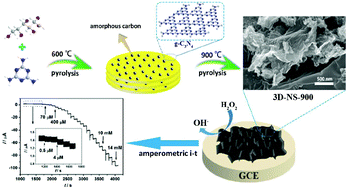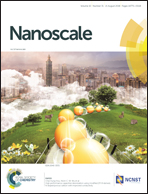Facile synthesis of 3D N-doped porous carbon nanosheets as highly active electrocatalysts toward the reduction of hydrogen peroxide†
Abstract
Constructing three-dimensional (3D) conductive frameworks with high specific surface areas and porous structures is indispensable for their applications as electrocatalysts. In this work, we illustrate for the first time that 3D N-doped porous carbon nanosheets (3D-NS), which are synthesized via a facile one-pot pyrolysis reaction using glucose and melamine as raw materials, can serve as high performance and green electrocatalysts for the reduction of H2O2. Moreover, a series of 3D-NS samples with a controllable content of nitrogen were obtained by adjusting the calcination temperature. From our research, the 3D-NS obtained at 900 °C possessed high specific surface areas, porous structures, proper dosages of N atoms, suitable degrees of graphitization and defects. Furthermore, we also illustrate their application in H2O2 electrochemical sensing in physiological environments. Under optimum conditions, the 3D-NS-based sensor displays a wide linear scope in the range of 0.5–14 000 μM and a low detection limit of 0.18 μM (S/N = 3). Therefore, with desirable selectivity, stability and anti-interference performance, the proposed sensor can be feasibly applied to detect H2O2 in human serum samples.



 Please wait while we load your content...
Please wait while we load your content...